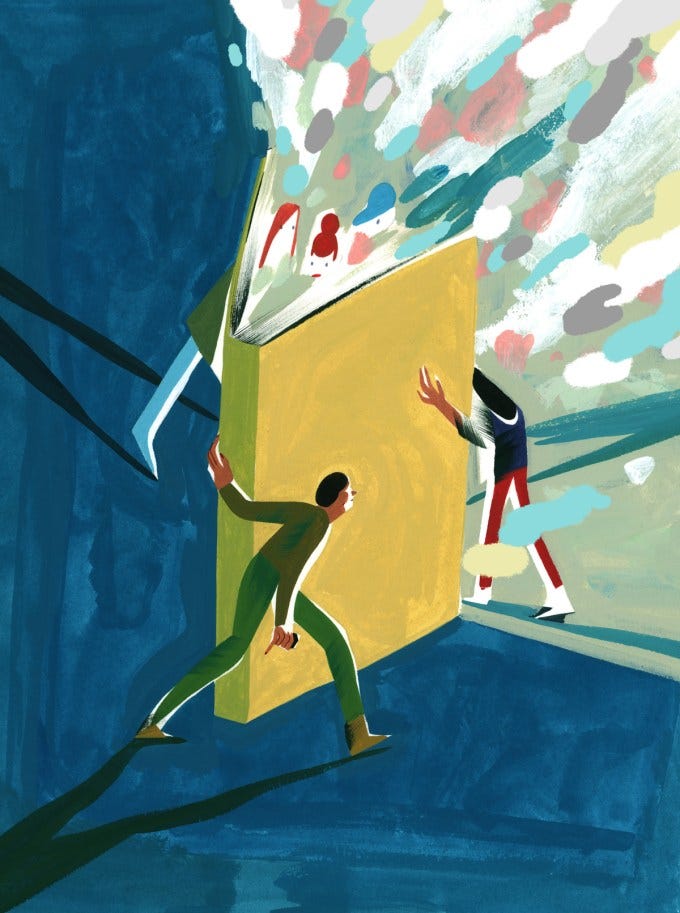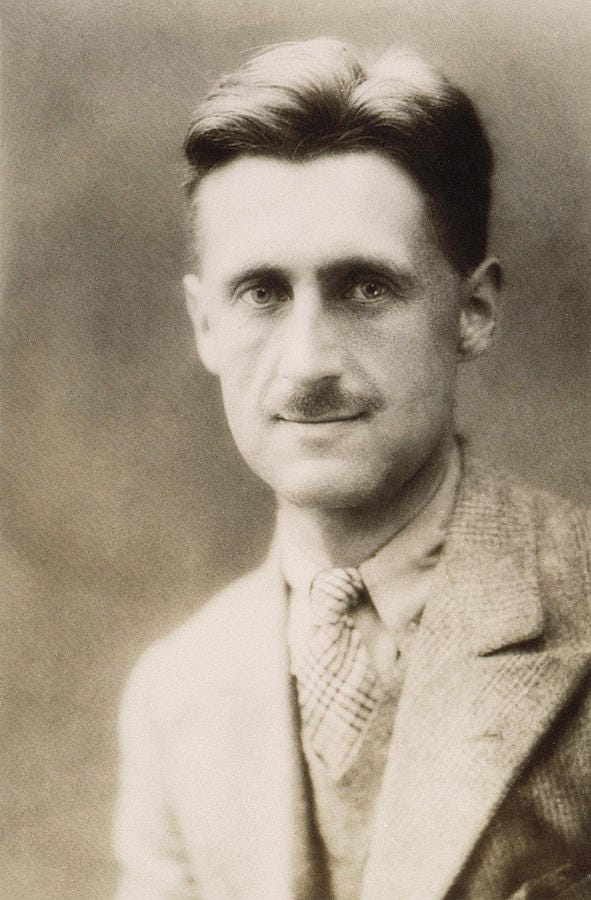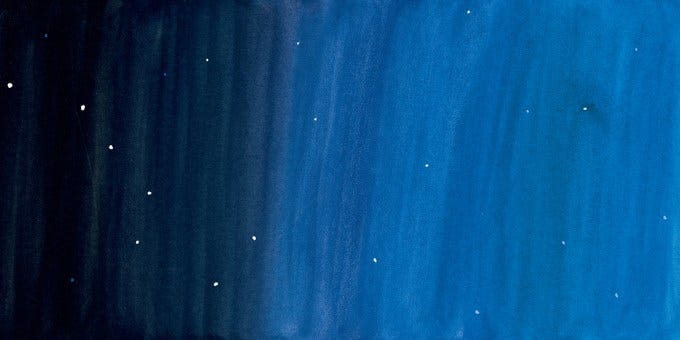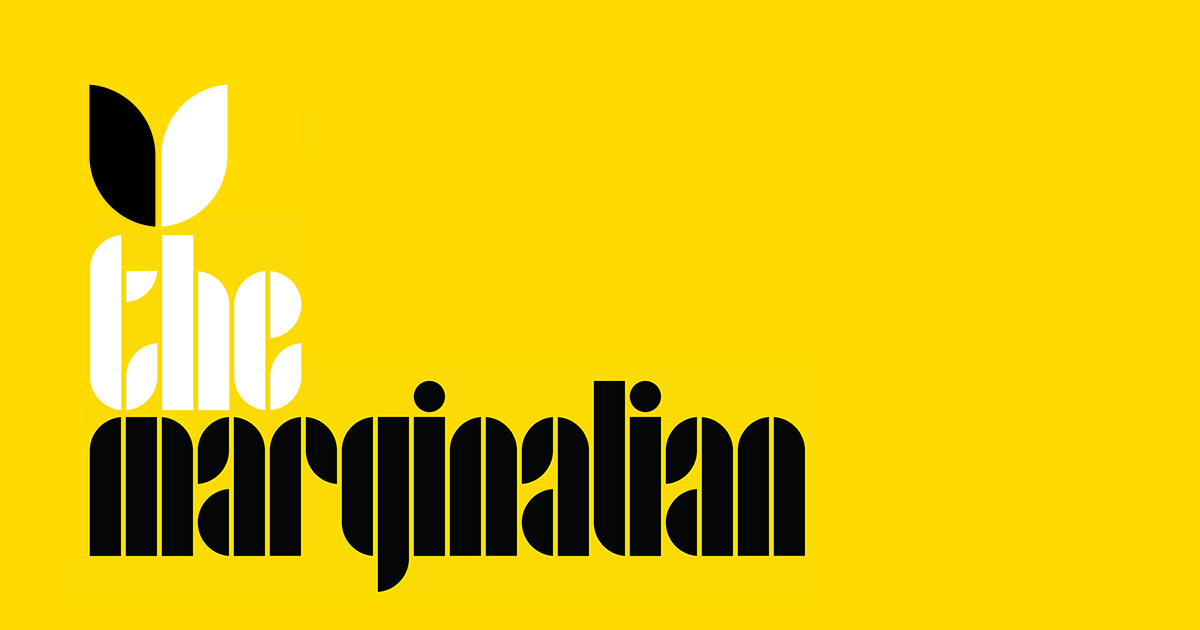Maria Popova's Favourite Books of the Past Year: Trees, hummingbirds, snails, Stoicism, storytelling, Orwell’s roses, the crucible of consciousness, and trees, always trees.
Maria Popova: The Marginalian.
In these darkening times, when the powerful and the political class have become utterly corrupted, and indifferent to the concerns of ordinary people, there are, as a kind of counterwave, a significant number of people trying to trigger a new Enlightenment. Maria Popova is one of the best and the brightest.
A Sense of Place Magazine is an unabashed fan of Maria Popova’s celebrated blog Brain Pickings, which has now evolved into The Marginalian, easily one of the best literary journals in the world.
Her book Figuring is a fascinating study of the loneliness of genius before the internet age.
https://asenseofplacemagazine.com/a-celebration-of-genius-maria-popova-and-figuring/
Maria Popova is a Bulgarian born New York based polymath who has it sometimes seems read everything so the rest of us don’t have to. Not just supremely intelligent, she has an uncanny eye for beauty combined with a deeply felt sense of what makes us human.
Here is a sampling of her pick of her favourite books of the past year. To read the full list go to the link at the bottom of this piece.
I used to assemble annual reading lists of favorite books published each year — never an objective claim of bests, always a subjective inner library catalogue of my readings and rivets. But over the years, as I grew more and more interested in the river of thought and time that has carved out the island of now, I found myself spending more and more time in archives, perusing increasingly older books, reading fewer and fewer of the new — partly because such are my subjective passions (of which The Marginalian has always been a record and reflection), and partly because our present culture seems to treat books as little more than printed “content” (that vacuous term by which we refer to cultural material and thought-matter online), self-referential and preying on the marketable urgencies of the present. With each passing year, more and more books seem to be written and sold as commodities than composed as torches of thought and feeling for our own epoch, but also for epochs to come.
It is a mercy that there are always those who refuse to conform and go on writing books to irradiate with undiminished light the hallway of time stretching between us and future readers. It is a gift of chance that some of these radiances made their way to my small library. Here are some such books published in the past year that I did read and love, enveloped in the context of why.
PROBABLE IMPOSSIBILITIES
“What exists, exists so that it can be lost and become precious,” Lisel Mueller, who lived to nearly 100, wrote in her gorgeous poem “Immortality” a century and a half after a young artist pointed the world’s largest telescope at the cosmos to capture the first surviving photograph of the Moon and the first-ever photograph of a star: Vega — an emissary of spacetime, reaching its rays across twenty-five lightyears to imprint the photographic plate with a image of the star as it had been twenty-five years earlier, immortalizing a moment already long gone.
And yet in a cosmological sense, what exists is precious not because it will one day be lost but because it has overcome the staggering odds of never having existed at all: Within the fraction of matter in the universe that is not dark matter, a fraction of atoms cohered into the elements necessary to form the complex structures necessary for life, of which a tiny portion cohered into the seething cauldron of complexity we call consciousness — the tiny, improbable fraction of a fraction of a fraction with which we have the perishable privilege of contemplating the universe in our poetry and our physics.
In Probable Impossibilities: Musings on Beginnings and Endings (public library), the poetic physicist Alan Lightman sieves four centuries of scientific breakthroughs, from Kepler’s revolutionary laws of planetary motion to the thousands of habitable exoplanets discovered by NASA’s Kepler mission, to estimate that even with habitable planets orbiting one tenth of all stars, the faction of living matter in the universe is about one-billionth of one-billionth: If all the matter in the universe were the Gobi desert, life would be but a single grain of sand.

Along the way, Lightman draws delicate lines of figuring from Hindu cosmology to quantum gravity, from Pascal to inflation theory, from Lucretius to Henrietta Leavitt and Edwin Hubble — lines contouring the most elemental questions that have always animated humanity, questions that are themselves the answer to what it means to be human.
Read more here.
ORWELL’S ROSES
There can be no wakeful and wholehearted devotion to standing for anything of substance — justice or peace or the myriad subtle ways we have of protecting all that is alive and therefore fragile — without wide-eyed, wonder-smitten wakefulness to every littlest manifestation of beauty and aliveness. “Envy those who see beauty in everything in the world,” the young Egon Schiele exhorted in a letter after being arrested for his radical art, hurtling toward an untimely death by the Spanish flu that would take the life of his young pregnant wife three days before taking his.
There can be no reverence for the timeless without tenderness for each moment beading the rosary of our mortal lives, and there is no place where we contact this more clearly than in our encounters with nature, be it in the majesty of a solar eclipse or in the miniature of a flowerpot. “The gardener digs in another time, without past or future, beginning or end,” the filmmaker and activist Derek Jarman wrote shortly after his HIV diagnosis and his father’s death as he began growing through grief amid the beauty of flowers. “Here is the Amen beyond the prayer.”
Suspended in time between Schiele and Jarman, ablaze with determination to counter the forces about to unworld the world with its deadliest war, George Orwell (June 15, 1903–January 21, 1950) devoted himself to a small, radical act of reverence for beauty.
In the spring of 1936 — while waiting for his beloved to arrive from London for their wedding, contemplating enlisting in the Spanish Civil War, and germinating the ideas that would bloom into Animal Farm and Nineteen Eighty-Four — Orwell planted some roses in the garden of the small sixteenth-century cottage that his suffragist, socialist, bohemian aunt had secured for him in the village of Wallington.
This poetic gesture with political roots inspirits the uncommonly wonderful Orwell’s Roses (public library). Like any Rebecca Solnit book, this too is a landmass of layered aboutness beneath the surface story — a book stratified with art and politics, beauty and ecology, mortality and what gives our lives meaning.
She writes:
If war has an opposite, gardens might sometimes be it, and people have found a particular kind of peace in forests, meadows, parks, and gardens.
Three and a half years after he planted them, after thirteen seasons of tending to them, Orwell’s roses bloomed for the first time. World War II had just begun and Ernest Everett Just had just discovered the cellular mechanism by which life begins. It was the year Dylan Thomas wrote his cosmic serenade to trees and what it means to be human and May Sarton penned her exquisite case for the artist’s duty to contact the timeless in tumultuous times, the year the World’s Fair immortalized Einstein’s heavy honey-toned German-Jewish accent in a time-capsule recording, beckoning posterity — that is, us — to defy the mass mentality that leads to war, to mindless consumerism, to the commodification of life itself.
In such a world, a rose is a requiem is a revolution.
Read more here.
ANALOGIA
Long ago, in the ancient bosom of the human animal stirred a quickening of thought and tenderness at the sheer beauty of the world — a yearning to fathom the forces and phenomena behind the enchantments of birdsong and bloom, the rhythmic lapping of the waves, the cottony euphoria of clouds, the swirling patterns of the stars. When we made language to tell each other of the wonder of the world, we called that quickening science.
But our love of beauty grew edged with a lust for power that sent our science on what Bertrand Russell perceptively rued as its “passage from contemplation to manipulation.” The road forked between knowledge as a technology of control and knowledge as a technology of acceptance, of cherishing and understanding reality on its own terms and decoding those terms so that they can be met rather than manipulated.
We went on making equations and theories and bombs in an attempt to control life; we went on making poems and paintings and songs in an attempt to live with the fact that we cannot. Suspended between these poles of sensemaking, we built machines as sculptures of the possible and fed them our wishes encoded in commands, each algorithm ending in a narrowing of possibility between binary choices, having begun as a hopeful verse in the poetry of prospection.

Every writer, if they are lucky enough and passionate enough and dispassionate enough, reads in the course of their lifetime a handful of books they wish they had written. For me, Analogia (public library) by George Dyson is one such book — a book that traverses vast territories of fact and feeling to arrive at a promontory of meaning from which one can view with sudden and staggering clarity the past, the present, and the future all at once — not with fear, not with hope, but with something beyond binaries: with a quickening of wonderment and understanding.
Dyson is a peculiar person to tell the history and map the future of our relationship with technology. Peculiar and perfect: The son of mathematician Verena Huber-Dyson and the philosophically inclined physicist Freeman Dyson, and brother to technology investor and journalist Esther Dyson, George rebelled by branching from the family tree of science and technology at age sixteen to live, as he recounts, “in a tree house ninety-five feet up in a Douglas fir above Burrard Inlet in British Columbia, on land that had never been ceded by its rightful owners, the Tsleil-Waututh.”
In this tree house he built with his own hands, Dyson shared the harsh winters — winters when a cup of tea poured from his perch would freeze before touching the ground — with a colony of cormorants roosting in the nextcrown fir. There, he watched a panoply of seabirds disappear underwater diving after silver swirls of fish he could see in the clear ocean all the way up from the tree. There, he learned to use, and to this day uses, his hands to build kayaks and canoes with the traditional materials and native techniques perfected over millennia. With those selfsame hands, he types these far-seeing thoughts:
There are four epochs, so far, in the entangled destinies of nature, human beings, and machines. In the first, preindustrial epoch, technology was limited to the tools and structures that humans could create with their own hands. Nature remained in control.
In the second, industrial epoch, machines were introduced, starting with simple machine tools, that could reproduce other machines. Nature began falling under mechanical control.
In the third epoch, digital codes, starting with punched cards and paper tape, began making copies of themselves. Powers of self-replication and self-reproduction that had so far been the preserve of biology were taken up by machines. Nature seemed to be relinquishing control. Late in this third epoch, the proliferation of networked devices, populated by metazoan codes, took a different turn.
In the fourth epoch, so gradually that almost no one noticed, machines began taking the side of nature, and nature began taking the side of machines. Humans were still in the loop but no longer in control. Faced with a growing sense of this loss of agency, people began to blame “the algorithm,” or those who controlled “the algorithm,” failing to realize there no longer was any identifiable algorithm at the helm. The day of the algorithm was over. The future belonged to something else.
A belief that artificial intelligence can be programmed to do our bidding may turn out to be as unfounded as a belief that certain people could speak to God, or that certain other people were born as slaves. The fourth epoch is returning us to the spirit-laden landscape of the first: a world where humans coexist with technologies they no longer control or fully understand. This is where the human mind took form. We grew up, as a species, surrounded by mind and intelligence everywhere we looked. Since the dawn of technology, we were on speaking terms with our tools. Intelligence in the cloud is nothing new. To adjust to life in the fourth epoch, it helps to look back to the first.
Read more here.
FUNNY WEATHER
The composite creation of a doctor, a philosopher, a poet, and a sculptor, the word empathy in the modern sense only came into use at the dawn of the twentieth century as a term for the imaginative act of projecting yourself into a work of art, into a world of feeling and experience other than your own. It vesselled in language that peculiar, ineffable way art has of bringing you closer to yourself by taking you out of yourself — its singular power to furnish, Iris Murdoch’s exquisite phrasing, “an occasion for unselfing.” And yet this notion cinches the central paradox of art: Every artist makes what they make with the whole of who they are — with the totality of experiences, beliefs, impressions, obsessions, childhood confusions, heartbreaks, inner conflicts, and contradictions that constellate a self. To be an artist is to put this combinatorial self in the service of furnishing occasions for unselfing in others.
That may be why the lives of artists have such singular allure as case studies and models of turning the confusion, complexity, and uncertainty of life into something beautiful and lasting — something that harmonizes the disquietude and dissonance of living.
In Funny Weather: Art in an Emergency (public library), Olivia Laing — one of the handful of living writers whose mind and prose I enjoy commensurately with the Whitmans and the Woolfs of yore — occasions a rare gift of unselfing through the lives and worlds of painters, poets, filmmakers, novelists, and musicians who have imprinted culture in a profound way while living largely outside the standards and stabilities of society, embodying of James Baldwin’s piercing insight that “a society must assume that it is stable, but the artist must know, and he must let us know, that there is nothing stable under heaven.”
Punctuating these biographical sketches laced with larger questions about art and the human spirit are Laing’s personal essays reflecting, through the lens of her own lived experience, on existential questions of freedom, desire, loneliness, queerness, democracy, rebellion, abandonment, and the myriad vulnerable tendrils of aliveness that make life worth living.
What emerges is a case for art as a truly human endeavor, made by human beings with bodies and identities and beliefs often at odds with the collective imperative; art as “a zone of both enchantment and resistance,” art as sentinel and witness of “how truth is made, diagramming the stages of its construction, or as it may be dissolution,” art as “a direct response to the paucity and hostility of the culture at large,” art as a buoy for loneliness and a fulcrum for empathy.
Laing writes:
Empathy is not something that happens to us when we read Dickens. It’s work. What art does is provide material with which to think: new registers, new spaces. After that, friend, it’s up to you.
I don’t think art has a duty to be beautiful or uplifting, and some of the work I’m most drawn to refuses to traffic in either of those qualities. What I care about more… are the ways in which it’s concerned with resistance and repair.
Read more here.
A SWIM IN A POND IN THE RAIN
We move through a storied world as living stories. Every human life is an autogenerated tale of meaning — we string the chance-events of our lives into a sensical and coherent narrative of who and what we are, then make that narrative the psychological pillar of our identity. Every civilization is a macrocosm of the narrative — we string together our collective selective memory into what we call history, using storytelling as a survival mechanism for its injustices. Along the way, we hum a handful of impressions — a tiny fraction of all knowable truth, sieved by the merciless discriminator of our attention and warped by our personal and cultural histories — into a melody of comprehension that we mistake for the symphony of reality.
Great storytelling plays with this elemental human tendency without preying on it. Paradoxically, great storytelling makes us better able not to mistake our compositions for reality, better able to inhabit the silent uncertain spaces between the low notes of knowledge and the shrill tones of opinion, better able to feel, which is always infinitely more difficult and infinitely more rewarding than to know.

That is what George Saunders explores throughout A Swim in a Pond in the Rain: In Which Four Russians Give a Master Class on Writing, Reading, and Life (public library) — his wondrous investigation of what makes a good story (which is, by virtue of Saunders being helplessly himself, a wondrous investigation of what makes a good life) through a close and contemplative reading of seven classic Russian short stories, examined as “seven fastidiously constructed scale models of the world, made for a specific purpose that our time maybe doesn’t fully endorse but that these writers accepted implicitly as the aim of art — namely, to ask the big questions.” Questions like what truth is and why we love. Questions like how to live and how to make meaning inside the solitary confinement of our mortality. Questions like:
How are we supposed to live with joy in a world that seems to want us to love other people but then roughly separates us from them in the end, no matter what?
Noting that “all coherent intellectual work begins with a genuine reaction,” Saunders frames the central question of his investigation: what we feel and when we feel it, in a story or in the macrocosm of a story that is a life — a framing that calls to mind philosopher Susanne Langer’s notion of music as “a laboratory for feeling in time,” for all great storytelling, as Maurice Sendak observed, is a work of musicality, and all that fills the brief interlude between birth and death is, in anthropologist Mary Catherine Bateson’s lovely phrasing, the work of “composing a life.” In this sense, a story is instrument for feeling — something Saunders places at the heart of his creative theorem:
What a story is “about” is to be found in the curiosity it creates in us, which is a form of caring.
Considering this consonance between storytelling and life, these parallels between how we move through the fictional world of a story and how we move through the real world, Saunders writes:
To study the way we read is to study the way the mind works: the way it evaluates a statement for truth, the way it behaves in relation to another mind (i.e., the writer’s) across space and time… The part of the mind that reads a story is also the part that reads the world; it can deceive us, but it can also be trained to accuracy; it can fall into disuse and make us more susceptible to lazy, violent, materialistic forces, but it can also be urged back to life, transforming us into more active, curious, alert readers of reality.
Dive in here.
THE SNAIL WITH THE RIGHT HEART
Great children’s books move young hearts, yes, but they also move the great common heart that beats in the chest of humanity by articulating in the language of children, which is the language of simplicity and absolute sincerity, the elemental truths of being: what it means to love, what it means to be mortal, what it means to live with our fragilities and our frissons. As such, children’s books are miniature works of philosophy, works of wonder and wonderment that bypass our ordinary resistances and our cerebral modes of understanding, entering the backdoor of consciousness with their soft, surefooted gait to remind us who and what we are.
This is something I have always believed, and so I have always turned to children’s books — The Little Prince above all others, for me — as mighty instruments of existential calibration. But I never thought I would write one.
And then I did: The Snail with the Right Heart: A True Story (public library) is a labor of love three years in the making, illustrated by the uncommonly talented and sensitive Ping Zhu.
While the story was inspired by a beloved young human in my own life, born with the same rare and wondrous variation of body as the real-life mollusk protagonist, it is a larger story about science and the poetry of existence, about time and chance, genetics and gender, love and death, evolution and infinity — concepts often too abstract for the human mind to fathom, often more accessible to the young imagination; concepts made fathomable in the concrete, finite life of one tiny, unusual creature dwelling in a pile of compost amid an English garden.
At the heart of the story is an invitation not to mistake difference for defect and to recognize, across the accordion scales of time and space, diversity as nature’s fulcrum of resilience and wellspring of beauty.
Dive in here.
MEDITATIONS: THE ANNOTATED EDITION
The vast majority of our mental, emotional, and spiritual suffering comes from the violent collision between our expectations and reality. As we dust ourselves off amid the rubble, bruised and indignant, we further pain ourselves with the exertion of staggering emotional energy on outrage at how reality dared defy what we demanded of it.
The remedy, of course, is not to bend the reality of an impartial universe to our will. The remedy is to calibrate our expectations — a remedy that might feel far too pragmatic to be within reach in the heat of the collision-moment, but also one with profound poetic undertones once put into practice, for little syphons the joy of life more surely than the wasted energy of indignation at how others have failed to behave in accordance with what we expected of them.
Few people have understood this more clearly or offered more potent calibration for it than Marcus Aurelius (April 26, 121–March 17, 180).
Two millennia before the outrage culture of the Internet, the lovesick queer teenager turned Roman emperor and Stoic philosopher addressed this curious self-mauling tendency of the human mind with his characteristic precision of insight and unsentimental problem-solving in the notebooks that became his Meditations (public library) — a timeless book, newly translated and annotated by the British classics scholar Robin Waterfield, which Marcus Aurelius wrote largely for and to himself, like Tolstoy wrote his Calendar of Wisdom and Bruce Lee calibrated his core values, yet a book that went on to stake the pillars of the philosophical system of Stoicism, equipping countless generations with tools for navigating the elemental existential challenges of being human and inspiring others to fill the gaps of its unaddressed questions with exquisite answers of their own.
Here is one of my favourite pieces from this new translation.
To read the full list of Maria Popova's favourite books of the past year go to the original story here.
https://www.themarginalian.org/2022/01/28/favorite-books-2021/?mc_cid=83005db40b&mc_eid=f21b8f18fd
Feature Image: Belted Hermit and Bishop Hermit Hummingbirds by John Gould, 1861. (Available as a print and as a face mask, benefitting the Nature Conservancy.)
To follow The Marginalian, which we couldn't recommend more highly, go here.













